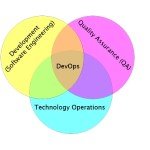-
Web Servers

Understanding Istio Telemetry v2
It’s been a while since I’ve blogged, and just like other posts in the past, this one is meant as…
Read More » -
Enterprise Java

Diving Into Istio 1.6 Certificate Rotation
Istio is a powerful service mesh built on Envoy Proxy that solves the problem of connecting services deployed in cloud…
Read More » -
Software Development

Do I Need an API Gateway if I Use a Service Mesh?
This post may not be able to break through the noise around API Gateways and Service Mesh. However, it’s 2020…
Read More » -
Software Development

Istio as an Example of When Not to Do Microservices
I’ve been pretty invested in helping organizations with their cloud-native journeys for the last five years. Modernizing and improving a…
Read More » -
DevOps

Moving the Service-mesh Community Forward
Service mesh is an important set of capabilities that solve some difficult service-to-service communication challenges when operating a services-style architecture.…
Read More » -
Enterprise Java

Guidance for Building a Control Plane for Envoy Part 3 – Domain Specific Configuration API
This is part 3 of a series that explores building a control plane for Envoy Proxy. In this blog series,…
Read More » -
Enterprise Java

Guidance for Building a Control Plane for Envoy Part 2 – Identify Components
This is part 2 of a series that explores building a control plane for Envoy Proxy. In this blog series,…
Read More » -
Enterprise Java

Guidance for Building a Control Plane for Envoy – Deployment Tradeoffs
Deploying control plane components Once you’ve built and designed your control plane, you’ll want to decide exactly how its components…
Read More » -
Enterprise Java

Guidance for Building a Control Plane for Envoy – Build for Pluggability
Envoy is a very powerful piece of software and every day new use cases and new contributions are being proposed…
Read More »




